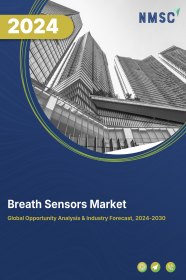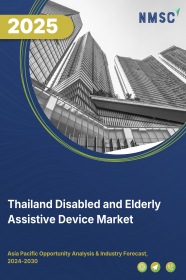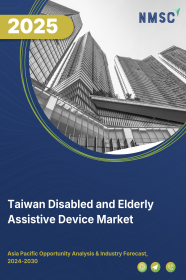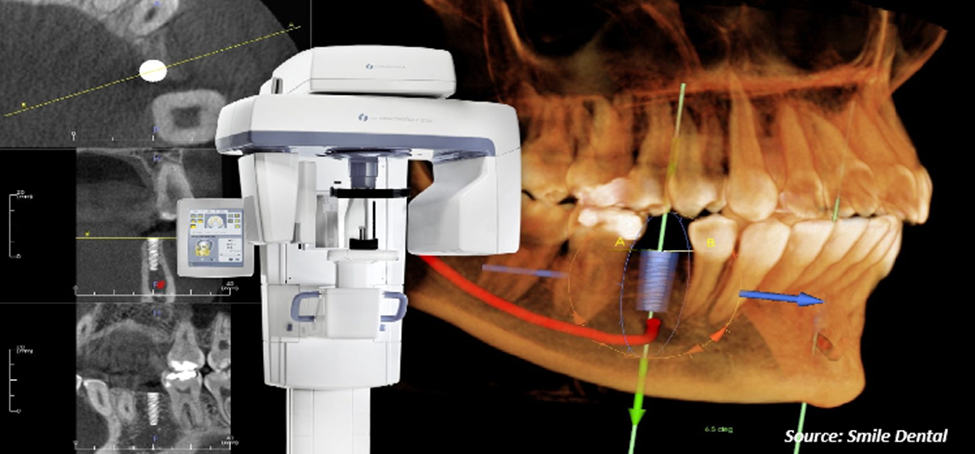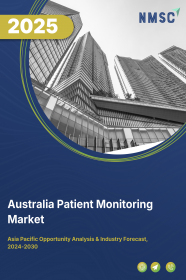
Australia Patient Monitoring Market by Product (Cardiac Monitoring Devices, Blood Glucose Monitoring Systems, Hemodynamic/Pressure Monitoring Devices, Multi-parameter Monitoring Devices, Respiratory Monitoring Devices, Temperature Monitoring Devices, Fetal & Neonatal Monitoring Devices, Neuromonitoring Devices, Weight Monitoring Devices, and Other Devices), by Type (Conventional and Wireless), and by End User (Home Healthcare, Hospitals & Clinics, and Others) - Opportunity Analysis and Industry Forecast, 2024–2030
Industry: Healthcare | Publish Date: 17-Feb-2024 | No of Pages: 148 | No. of Tables: 110 | No. of Figures: 75 | Format: PDF | Report Code : N/A
Market Definition
The Australia Patient Monitoring Market size was valued at USD 1.03 billion in 2023, and is predicted to reach USD 1.79 billion by 2030, with a CAGR of 7.9% from 2024 to 2030. Patient monitoring is a crucial component of modern healthcare, involving the ongoing or periodic evaluation of a patient's vital signs, physiological measurements, and general health status throughout their medical care. This process utilizes a variety of medical devices and technologies to gather, record, and analyze data such as blood pressure, heart rate, oxygen saturation, respiratory rate, temperature, and other essential indicators.
The patient monitoring market encompasses the healthcare industry segment responsible for developing, manufacturing, and supplying equipment and systems for the continuous or intermittent monitoring and recording of a patient's vital signs and health parameters. This segment plays a pivotal role in a wide array of healthcare settings, including hospitals and intensive care units, outpatient clinics, and home healthcare. This ensures that patients receive the appropriate level of care tailored to their specific medical needs.
Growing Aging Population Creates Demand for Patient Monitoring Systems
Australia is experiencing a demographic shift characterized by an increasing proportion of elderly individuals in its population. As people age, there is often a higher prevalence of chronic illnesses and health conditions that require ongoing medical attention. This demographic trend places a greater demand on healthcare systems to provide effective monitoring and management of various health parameters. Patient monitoring systems play a vital role in this context by allowing healthcare providers to keep track of the health status of elderly patients, especially those with chronic diseases.
Rising Chronic Diseases Propels the Patient Monitoring Growth Over the Region
The escalating prevalence of chronic diseases, encompassing cardiovascular disorders, diabetes, and respiratory ailments, is further propelling the growth of the patient monitoring market in Australia. Patient monitoring devices play a crucial role in managing chronic conditions by providing real-time data on vital signs and medication adherence, enabling timely interventions and preventive measures. This growing burden of chronic diseases necessitates advanced healthcare solutions, fostering increased investment in patient monitoring technologies.
Connectivity Issues in Patient Monitoring Devices Restrain the Market Growth
One of the significant restraining factors in the patient monitoring market in Australia is the connectivity issues which pose a risk to real-time data transmission and communication between devices, impacting the timeliness and accuracy of patient information. Addressing these challenges is crucial for unlocking the full potential of patient monitoring technologies and ensuring their widespread adoption in the healthcare sector.
Introduction of AI and Machine Learning in Patient Monitoring Systems Create Further Growth Opportunities
AI and ML are revolutionizing patient monitoring by enabling the in-depth analysis of vast amounts of data. By analyzing historical patient data, AI algorithms can detect subtle patterns and anomalies in vital signs and medical history, allowing for early identification of potential health problems before symptoms appear. This early detection capability facilitates timely interventions that can improve patient outcomes.
Furthermore, AI and ML support personalized medicine by enabling the tailoring of treatment plans to individual patient characteristics and responses. These technologies help in risk stratification, assisting healthcare providers in prioritizing interventions for patients at higher risk of developing specific medical conditions or complications.
Competitive Landscape
Various market players operating in the Australia patient monitoring industry include Medtronic Plc, Koninklijke Philips N.V., GE Healthcare, Siemens Healthineers, Nihon Kohden Corporation, Abbott Laboratories, Masimo Corporation, Hill-Rom Holdings, Inc., Biotronik SE & Co. KG, Honeywell International, Inc., and others.
Australia Patient Monitoring Key Market Segments
By Product
-
Cardiac Monitoring Devices
-
Mobile Cardiac Telemetry Monitors
-
Electrocardiogram (ECG) Devices
-
Implantable Loop Recorders
-
Event Monitors
-
Smart/Wearable ECG Monitors
-
-
Blood Glucose Monitoring Systems
-
Self-Monitoring Blood Glucose Systems
-
Continuous Glucose Monitoring Systems
-
-
Hemodynamic/Pressure Monitoring Devices
-
Hemodynamic Monitors
-
Blood Pressure Monitors
-
Disposables
-
-
Multi-Parameter Monitoring Devices
-
Low-Acuity Monitoring Device
-
Mid-Acuity Monitoring Devices
-
High-Acuity Monitoring Devices
-
-
Respiratory Monitoring Devices
-
Pulse Oximeters
-
Spirometers
-
Capnographs
-
Peak Flow Meters
-
-
Temperature Monitoring Device
-
Handheld Temperature Monitoring Devices
-
Table-Top Temperature Monitoring Devices
-
Wearable Continuous Monitoring Devices
-
Invasive Temperature Monitoring Devices
-
Smart Temperature Monitoring Devices
-
-
Fetal & Neonatal Monitoring Devices
-
Neonatal Monitoring Devices
-
Fetal Monitoring Devices
-
-
Neuromonitoring Devices
-
Electroencephalograph (EEG) Machines
-
Electromyography Machines
-
Cerebral Oximeter
-
Intracranial Pressure (ICP) Monitors
-
Magnetoencephalography (MEG) Machines
-
Transcranial Doppler (TCD) Machines
-
-
Weight Monitoring Devices
-
Digital
-
Analog
-
-
Others Devices
By Type
-
Conventional
-
Wireless
By End User
-
Home Healthcare
-
Hospitals & Clinics
-
Others
REPORT SCOPE AND SEGMENTATION:
|
Parameters |
Details |
|
Market Size in 2023 |
USD 1.03 Billion |
|
Revenue Forecast in 2030 |
USD 1.79 Billion |
|
Revenue Growth Rate |
CAGR of 7.9 % from 2024 to 2030 |
|
Analysis Period |
2023–2030 |
|
Base Year Considered |
2023 |
|
Forecast Period |
2024–2030 |
|
Market Size Estimation |
Billion (USD) |
|
Growth Factors |
Rising Aging Population creates Demand for Patient Monitoring systems Impact of Rising Chronic Diseases Propels the Patient Monitoring Growth over the region |
|
Companies Profiled |
10 |
|
Market Share |
Available for 10 companies |
|
Customization Scope |
Free customization (equivalent up to 80 working hours of analysts) after purchase. Addition or alteration to country, regional, and segment scope. |
|
Pricing and Purchase Options |
Avail customized purchase options to meet your exact research needs. |
KEY PLAYERS
-
Medtronic Plc
-
Koninklijke Philips N.V.
-
GE Healthcare
-
Siemens Healthineers
-
Nihon Kohden Corporation
-
Abbott Laboratories
-
Masimo Corporation
-
Hill-Rom Holdings, Inc.
-
Biotronik SE & Co. KG
-
Honeywell International, Inc.
















 Speak to Our Analyst
Speak to Our Analyst



